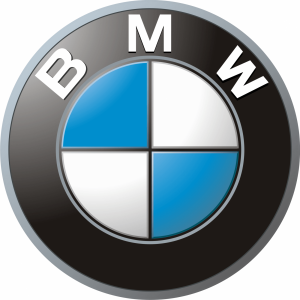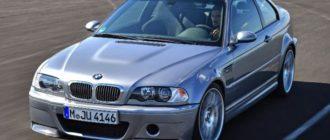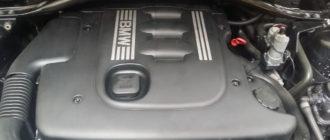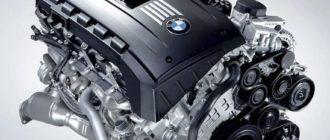Choosing a good car is challenging, given the multitude of nuances that may not be immediately noticeable at first glance. When looking for a mid-priced car, the BMW 3-Series and the 2016 Skoda Octavia stand out. But which car is better to choose – the classic Bavarian or the Czech one?
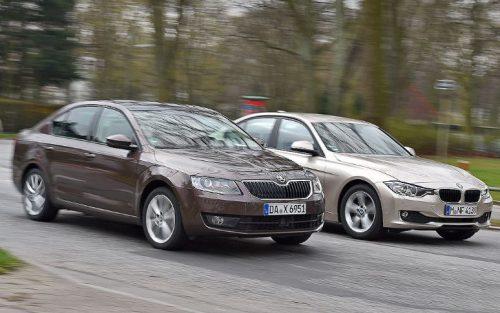
The price difference is significant, and the cars compete with Mercedes, Cadillac, and Audi. The engines and bodies are reliable, with a wide range of options. However, without a detailed comparison, it's difficult to determine the better car.
Exterior Features of BMW 3-Series and Skoda Octavia
Let's start with the BMW 3 Series, which underwent slight changes in 2016. Although there were almost no improvements in its external appearance. The headlights are slightly different from the previous model, with halogens replaced by LEDs.
Moreover, the lamps inside the headlights are placed at a greater distance, increasing the light coverage. Three new colors were added that year – platinum silver, blue, and brown metallic.
The dimensions of the BMW 3 Series body are:
- Length – 4633 mm.
- Height – 1492 mm.
- Width – 1811 mm.
In the same year, the Octavia underwent a transformation. It maintained its signature style but underwent numerous external changes. More style, sophistication, and restraint can be felt in all body elements with special stampings and sharp edges.
The front showcases headlights somewhat reminiscent of those on the Volkswagen Passat B7. The new Octavia bumper features additional air intakes. The radiator grille now has vertical large slots.
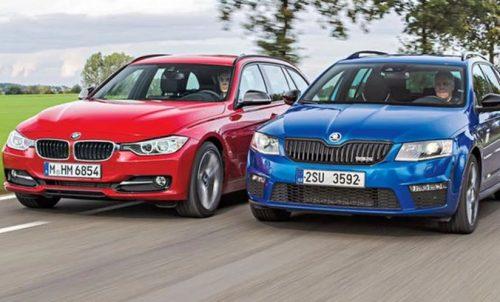
From the side, the car somewhat resembles an Audi. The large door openings and almost flat roof that smoothly transitions into the trunk lid add to its elegance.
At the rear, the Skoda features new LED lights. The body dimensions are:
- Length – 4659 mm.
- Height – 1482 mm.
- Width – 1814 mm.
The body sizes of Skoda and BMW are almost the same. The appearance of both models is modern and very attractive. It's impossible to definitively say which car is better. The Octavia does not lag behind its competitor in any aspect.
Interior of the Cars
The interior of the BMW 3 Series features numerous chrome elements and glossy surfaces, emphasizing its premium class. The center console is made of black gloss, with plenty of chrome accents and ambient lighting.
Even the ventilation system openings are chrome-trimmed. Interestingly, all four doors have the same design as the entire front panel. Enhanced communication and navigation systems, a color display on the windshield – these are features of the 2016 Bavarian model.
The 2016 Octavia maintains the same signature style as its predecessors. High functionality, driver's seat adjustment, excellent ergonomics, and a readable instrument panel are notable features.
The materials, like in BMW, are high-quality, with top-notch assembly. In the central part of the dashboard, there is a large display, convenient and attractive climate control regulators.
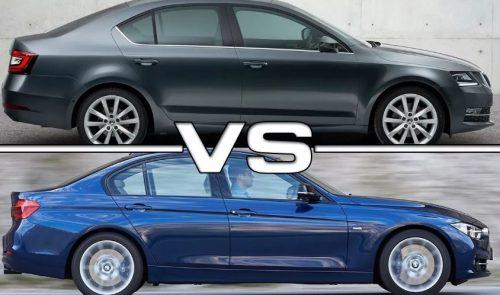
Comfortable seating on the front seats is ensured by fine adjustment of their position and good side support. The spacious and roomy interior provides comfort even for rear passengers. The trunk has a volume of almost 600 liters, exceeding that of its Bavarian counterpart.
Technical Specifications of BMW 3-Series and Skoda Octavia
The BMW 3 Series lineup introduced a inline-six 3-liter engine with twin turbos. With a power of 320 horsepower at 5500 rpm, it accelerates to the first hundred in 4.9 seconds in rear-wheel drive and 0.2 seconds less in all-wheel drive. These are figures for the automatic transmission; with the six-speed manual, acceleration takes 0.1 seconds longer. The maximum speed is 250 km/h, likely limited by the manufacturer.
There are three more engines in the lineup with 2-liter displacement and power of 180 and 250 horsepower. Two are gasoline (one with a turbo), and one is diesel. Additionally, across Europe, you can find a BMW 3 Series with a three-cylinder engine producing 136 hp and displacing 1.5 liters.
There is even a hybrid version, labeled as 330e. It features a two-liter gasoline engine and an electric motor with 108 horsepower. The combined power of both engines is 252 hp. According to the manufacturer, a full battery charge covers about 35 km, with a gasoline consumption of only 2.1 l/100 km when both engines are running.
Skoda also offers a variety of engines – in the Russian market, you can find cars with three gasoline and one diesel engine. Judging by the displacement and power, the Octavia caters to a broader audience. With volumes of 1.2, 1.4, and 1.8 liters, the power output is 105, 140, and 180 hp respectively. The 2-liter diesel engine generates 143 hp.
The transmission is either automatic or manual. Compared to the BMW 3 Series, the Octavia's acceleration is not impressive – reaching the first hundred in 10.3 seconds (with the 1.2-liter engine) and 7.3 seconds (with the 1.8-liter engine). The diesel engine accelerates the Octavia to the first hundred in 8.9 seconds. The car is designed for city driving, so sports car performance should not be expected. However, the maximum speed on the most powerful engine is 231 km/h.
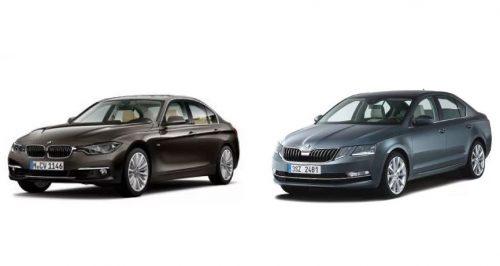
Gasoline engines consume 5.2 to 6.4 liters in mixed mode, while the diesel engine consumes only 5.1 liters. Some car owners note that the Octavia has a stiff suspension, which is not ideal for driving on uneven roads. However, at high speeds, this makes the car more stable and predictable. Overall, the suspension quality is excellent and requires no maintenance.
Read more: BMW M3 E92 Model Review
Which is Better – BMW 3-Series or Skoda Octavia
Of course, BMW has more powerful and efficient engines. And if you are fortunate enough to find a hybrid version, it also shows concern for the environment. BMW engines have 4 valves per cylinder, which positively impacts fuel combustion and power.
Furthermore, the weakest BMW engine has the same power as the most potent Octavia engine. The only downside is the higher vehicle tax rate. However, the performance is exceptional. Even the most basic BMW model meets Euro-6 environmental standards, while the Octavia only meets Euro-5. Another advantage is the larger fuel tank capacity (60 liters for BMW, 50 liters for Octavia).
But the Octavia also has its advantages. Fuel consumption in mixed cycle is significantly lower. The trunk volume is 70 liters larger. Additionally, the Skoda's weight is 385 kg less, positively affecting acceleration, braking distance, and fuel consumption. The turning radius is 1 meter less on the Skoda.
Both the Czech and the Bavarian cars have their merits. However, the key aspect for any buyer is the car's cost. A new car may not be affordable, so purchasing on the secondary market is an option. The 2016 Octavia starts from 750,000 rubles. The BMW 3 Series will cost at least 1.3 million rubles, with an average price around 1.5 million.
The price difference is substantial, while the quality of execution is nearly identical. However, the Bavarian car appears more luxurious, with the feeling that every element, even the smallest, was meticulously designed for hours if not days. The Skoda matches its competitor in quality, but it looks slightly less affluent.
